Born addicted to opioids
Babies born to opioid-dependent mothers are typically whisked away to intensive care units and given morphine. But an innovative program is seeing shocking results with far simpler treatment
Share
Opioid withdrawal is one of the most painful things a person can endure. Your back is sore. Your teeth throb. Your bones ache. Even your skin hurts. A gnawing hunger eats at your raw stomach, and you’ve never felt thirstier. Give in to the urge to eat or drink, however, and you’ll throw up. Again. The diarrhea, already so bad you’re lying on the bathroom floor between bouts, gets even worse. And then there’s your mood. It boomerangs from boiling rage to a desperate low. You wonder if you’re dying. Then you wish you would, just to stop the pain.
Imagine, then, how it feels for a baby. Infants who have been exposed to opioid painkillers like morphine, codeine, oxycodone, methadone treatment or street drugs such as heroin while in utero are literally cut off from the drugs when they are born. Within their first 72 hours of life, about half of the babies who have been exposed begin having withdrawal symptoms.
READ: These are the provinces where the opioid crisis is most severe
The medical term for this is neonatal abstinence syndrome, or NAS, and rates of babies born with it are rising along with the exponential increase of painkiller use and abuse. Next to the United States, Canada is the largest per capita consumer of pain pills in the world; in 2016, our pharmacies dispensed 19 million prescriptions for opioids—basically one prescription for one in every two Canadians. In the past decade, the number of babies exposed to opioids in the womb has increased 16-fold in Ontario. And according to Ontario’s Provincial Council for Maternal and Child Health (PCMCH), more than 950 infants were born to opioid-addicted mothers last year. Just over half of them will live the toughest days of their lives in their first week outside the womb.
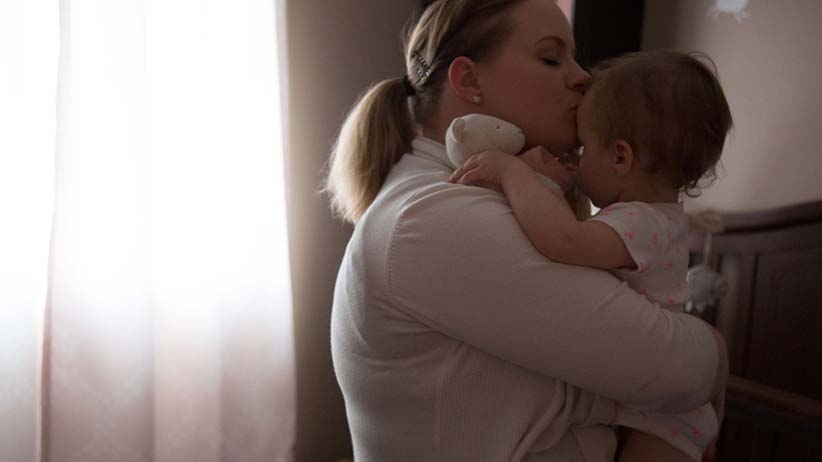
Watching babies suffer from NAS is heartbreaking. Their cries have a high, tinny pitch; their little faces and bodies are tight with tension and pain. Irritable and tough to settle, these babies tend to feed poorly, and they writhe with upset stomachs. They vomit frequently and have diarrhea. They sweat and then shiver. And in severe cases, the babies suffer seizures, which can cause neurological damage.
Babies at risk of suffering withdrawal are typically separated from their mothers immediately after birth and moved to intensive care for treatment. When they show symptoms, the babies are started on morphine; the dosage is increased until their symptoms subside. Weaning them off the morphine is a slow and careful process that can stretch the babies’ hospital stays into several weeks or even months. That separation from mom, who is commuting to the hospital daily, makes it tough for mother and infant to get to know each other, let alone establish that critical bond.
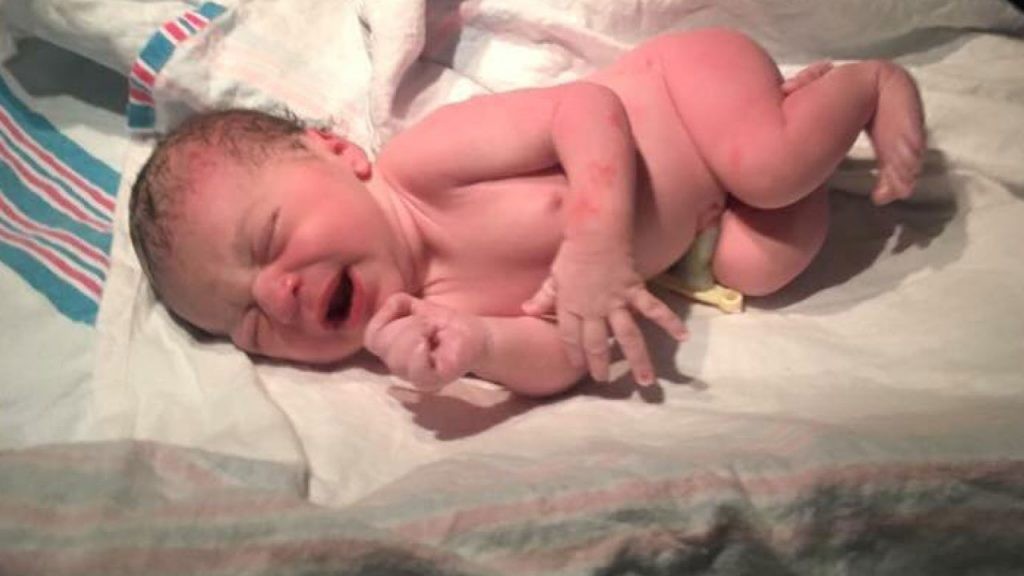
This is why Nicole Francis, a first-time mom, was terrified and full of self-loathing in the days following the birth of her daughter, Everley. Nicole obsessively watched the hours tick by in their hospital room in Kingston, Ont. Every eight hours, nurses bustled in to check Everley for symptoms of NAS. Carrying clipboards, they took copious notes on her temperature, heart rate, wet or dirty diapers, nasal stuffiness and whether she was sneezing, spitting up, shaking, yawning or sweating. Even if Everley was sleeping, the nurses would rub her back gently and pick her up, eliciting a cry.
Every time Everley so much as sneezed, Nicole was racked with guilt, worried it might be the start of symptoms—no matter how kind and reassuring the nurses were. “They were all really good,” she says. “But you judge yourself more than anybody would ever judge you.” Worst-case scenarios ran through her mind. Would Everley go into withdrawal and have to be moved to the neonatal intensive care unit? “The last thing I wanted was for my daughter to be taken away and put on morphine because of my stupidity in the past,” she says.
Nicole, a 26-year-old public servant, does not look like the stereotypical “addict.” A bubbly, energetic, enthusiastic mother, she gives few clues to having spent the better part of the past five years battling an addiction to prescription painkillers that developed after she broke her arm. But there is no typical “addict” in the opioid epidemic that has gripped this country.
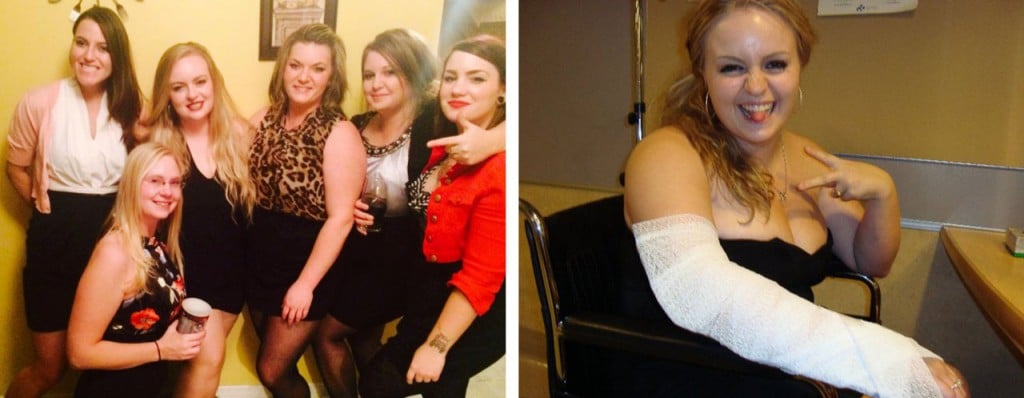
“Many people who become dependent or even addicted to these drugs have never actually taken an illicit drug in their lives,” says Kimberly Dow, medical director of the neonatal intensive care unit at Kingston General Hospital. “These are people who have chronic pain and need medication. Opioids are prescribed by physicians and women start taking them,” she says. Nicole and the other half-dozen women I spoke to for this story are high-functioning, otherwise “normal” parents; they could be your neighbour, your accountant, a co-worker or a mom in your play group.
Doctors across the country have declared opioid abuse a national public health crisis. As the number of Canadians dependent on painkillers continues to rise, so does the need to find effective treatment for a particularly vulnerable set of victims: newborns and their mothers. In the current system, both are at risk of having their lives thrown off course by a bad start marked by weeks of separation. One innovative program, however, reimagines what treatment could be. Instead of sequestering the babies, the program Nicole was a part of has babies stay in private rooms—and in the primary care of their mothers. With this approach, healthcare and social workers hope to empower mothers who might otherwise not feel capable of caring for their infants. They’re also hoping to prevent families from being shattered by addiction.
* * *
Nicole’s dependence on painkillers started with a relatively tame girls’ night out. In Ottawa to visit friends, she got dressed up, had a few drinks and went out dancing. “It was the first time I had ever worn heels,” she says. “They weren’t even that high!” Up on a crowded, tiered platform at a bar called Liquor Store, she took a step backwards. “I don’t even remember feeling the stairs,” she says. “I was suddenly lying on my back.”
Two men bent down to help Nicole up, and when one grabbed her right forearm, it felt burning hot. Looking down, she saw bone sticking out of the skin on her wrist. X-rays showed her arm was broken in six places. Repairing it would ultimately require two surgeries, two plates and 11 screws. To help with the pain, Nicole’s doctors prescribed Percocet, a pill-form combination of acetaminophen (you know it as Tylenol) and opiate-based oxycodone.
Nicole, like thousands of other Canadians, had no idea that prescription—it was just a few pills—would be the beginning of a crippling dependency. “I thought it was just like Tylenol,” Nicole says. “I learned pretty fast that it wasn’t.”
As Meldon Kahan, medical director at Toronto Women’s College Hospital, told a House of Commons committee, “No other prescribed medication comes close to [causing] the suffering caused by opioids.” In 2014, Ontario was logging 500 deaths per year from opioid overdoses. Just one year later, the number had ballooned to nearly 750. Numbers for 2016 were trending even higher: In the first six months of the year, Ontario recorded 412 opioid-related deaths.
The medication immediately stopped the excruciating pain in Nicole’s arm—“It was like I got hit with a ton of bricks,” Nicole says. She played with the dose to try to get it right, first taking just half a pill. When that was no longer enough, she started taking a whole pill. Then, as her body built up a tolerance, she found she needed one and a half pills at a time.
One bonus was the impact the drugs had on her social anxiety, which melted away every time she took a pill. “It got so I couldn’t do anything without it. It made me feel normal. I didn’t feel I could go to work unless I had Percocet. I didn’t even feel like I could wash the dishes or make supper or clean the house without taking it,” Nicole says. “The medication doesn’t make you high in the sense that it alters your state of mind. You’re not disoriented. It feels like you get this big burst of energy and you want to go, go, go,” she says. “It’s like the caffeine buzz from drinking an extra-large Tim Hortons coffee—times 10.”
Over-the-counter pain relievers, such as Tylenol and Advil, are designed to inhibit the body’s production of pain-causing chemicals. Opioids, available only by prescription, take it up a notch by blocking physical pain and, as a side effect, flooding the brain’s reward circuit with dopamine, which has an antidepressant effect. This is the reason Nicole suddenly felt less anxious. The brain quickly learns that an opioid hit leads to feelings of happiness, contentment and even euphoria. It forms a powerful addiction that makes opioids some of the most habit-forming drugs ever invented.
Tragically, many people become addicted to painkillers through legally obtained prescriptions. Complications from her surgery kept Nicole in enough pain that, for four years, her doctor kept renewing her painkiller prescriptions. She didn’t realize she had actually formed an addiction, she says, until her doctor told her it was time to stop the medication after a final surgery to remove the pins and screws in her arm. Her pain, the doctor said, should be gone. But Nicole could not quit the pills.
When she tried to stop taking them, she says she would start to feel “dope-sick” at the onset of withdrawal symptoms. The feeling would quickly become unbearable. “I’ve broken 11 bones in my body. I’ve had my wisdom teeth removed. I’ve even had my appendix burst,” Nicole says. “Nothing is worse than being dope-sick. It feels like your body is shutting down.”
She tried to suffer through the symptoms, even at work. At the time, she was working as a cook in the kitchen at Joyceville Institution, a medium-security correctional facility in Kingston. Part of her job included working alongside inmates assigned to kitchen duties. One morning, while cleaning up the slop left from a batch of premixed scrambled eggs, Nicole came undone. She threw up all over a table in front of several inmates. One accused her of going through withdrawal.
Nicole says she played dumb and told the inmate she didn’t know what he was talking about. Privately, however, she was shocked at the grip the pills had. “I was never into drugs at all. I never did ecstasy or cocaine. I’ve never even smoked weed and wouldn’t know where to go to get it,” Nicole says. “Withdrawal led to misery. I was sick, disgusted, irritated.”
Desperate for pills to stop her spiral, she began scheming for ways to buy them. She scanned Facebook friends, she says, “trying to think of people I knew who were in with that crowd.” Nicole eventually found an uncle of a distant friend who sold painkillers on the street. She bought them illegally for more than a year before she decided to get treatment.
“It’s still hard to admit that I let it get that bad. That’s not the type of person I am,” Nicole says. “But nobody expects to become addicted to something. You don’t have a coffee for the first time and expect you’ll have to drink five cups every morning for the rest of your life to be functional. It was the same for Percocet—you need it like you need to drink water.”
Nicole’s story, unfortunately, is not unusual. There are countless stories like hers. Jane Hughes*, a personal support worker in Belleville, Ont., was shocked and disgusted with herself for developing an addiction to painkillers.
The mother of a six-year-old girl from her first marriage, Jane went to see her doctor about back pain that had become unbearable. The physical demands of Jane’s job often required her to lift clients. Then she hurt her knee while running, which compounded her discomfort. When physiotherapy and massage were no longer helping, her doctor wrote a prescription for Tylenol 3. Those pills upset Jane’s stomach. Next up was Percocet.
“It was the devil,” she says. “Once it got into my system, I felt so much better. But it was like I needed more. When it’s in you, it just takes over. It wasn’t me.”
Jane was taking up to eight pills per day when, at age 39, she learned she was pregnant again. Terrified of the impact her addiction might have on the baby, she threw out her pills, but was immediately in withdrawal: throwing up, having diarrhea, sweating, freezing, shaking. “I thought I was dying,” she says. “I have never in my whole life experienced anything that severe.”
Unable to bring herself to search for Percocet on the street, Jane went back to her doctor to beg for a new prescription. He agreed, so long as she would take only six per day instead of eight. She said she would. But her body, growing heavier with the pregnancy, craved higher doses. If she didn’t oblige, she plunged back into withdrawal.
“I didn’t know what to do,” says Jane. “When I was pregnant with my first daughter, I never even took a Tylenol. I just felt so guilty and horrible—what was I doing to my baby?”
While it’s safest to avoid addictive and mind-altering drugs during pregnancy, the general consensus among doctors is that opioids—unlike alcohol and cocaine—can be consumed without risking harm to a developing fetus. “There is no clear association between opioids taken in pregnancy and birth defects or adverse pregnancy outcomes,” says Adam Newman, a Kingston-based family physician and addiction treatment specialist.
For Nicole, the fight to end her dependency continued throughout her pregnancy. Although she stopped taking Percocet four weeks before she conceived, she had swapped them with a daily dose of an opioid-replacement medication called Suboxone, prescribed by Newman, her doctor. The medication is extremely long-acting, the chemicals released in a slow and controlled manner. This prevents the dopamine dump the body loves and also prevents the body from going into withdrawal, which carries a risk of miscarriage. For this reason, most opioid-dependent women who become pregnant are encouraged by their doctors not to kick their habit. It’s better, Newman says, for mothers to stay on opioids in the form of a doctor-supervised, regulated medicated treatment.
The most common of these opioid-replacement therapies is methadone. Just like Suboxone, methadone is specifically designed to block the euphoric high. It also cuts down on cravings and prevents users from going into withdrawal—and back to the opioid they initially grew addicted to.
Methadone does have its drawbacks, though. Law requires it to be dispensed from a licensed pharmacist or clinic; patients must make daily trips to get their doses and submit to weekly (or more frequent) urine testing to ensure they are not abusing the medication or using it with other drugs, which can form a deadly cocktail. For many, the prospect of having to line up for their medication every day carries an embarrassing stigma. “I was like, Oh, gracious. I can’t do that. I have kids. I can’t go on methadone— people will see me,” says Jane, who ultimately chose Suboxone, a pill-form alternative she could take at home.
For others, however, methadone becomes a lifeline. Jennifer Chambers*, a Belleville mother of two kids under the age of two, grew addicted to OxyContin after taking a prescription she was given for tendonitis; methadone treatment helped her hold down a job and “just be a normal member of society again.” On the pills, she had gone from being a high school soccer star to a young adult under arrest for writing herself a fake prescription for painkillers. “I needed Oxys just to feel normal. I couldn’t function without them and realized I was either going to wind up dead or in jail.” The first day Jennifer began taking methadone, she says her addiction was beat. “It helped me immediately. I felt normal without having to abuse other things, and I never used again.”
Jennifer was still on methadone when she found out she was pregnant with her first baby, Landon. “I felt like the worst person in the entire world,” she says. “People automatically think you’re a drug addict if you’re on methadone, especially being pregnant.”
It didn’t help when she learned that the baby would be at risk of NAS when he was born. Because she was on methadone, Jennifer says, she was told she could not deliver in Cobourg, Ont., where she was living, because there was no neonatal intensive care unit (NICU) for the baby. She chose to deliver 75 kilometres east, in Belleville. At her orientation there, she was relieved to learn about the hospital’s innovative approach to treating mothers with addictions. “I was incredibly nervous. There’s such a stigma that comes along with this. I was afraid of the judgment,” she says.
Once she was there, however, she learned first-hand what a great impact small changes in care can have.
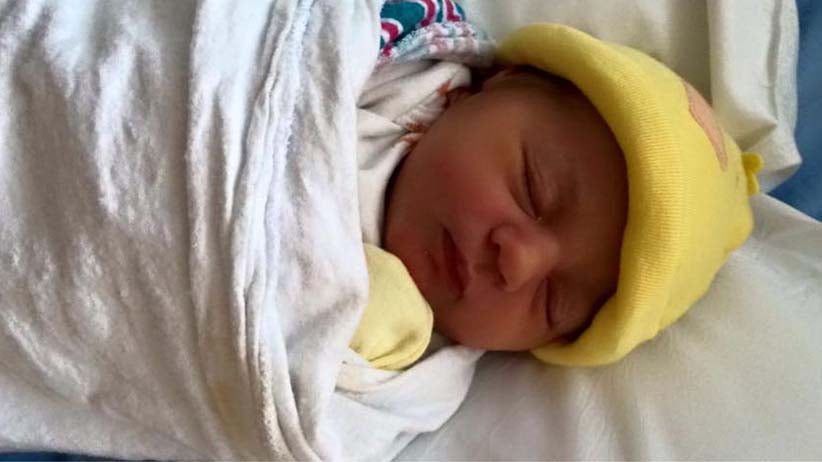
At most hospitals, babies at risk of NAS are immediately separated from their mothers after birth—regardless of whether they have shown withdrawal symptoms—and put into NICUs to be under close watch. But once the babies are in the NICU—a bright, bustling, beeping room—their symptoms tend to appear or intensify. More than 80 percent require morphine, another opioid-based medication, which has to be carefully administered and extends their hospital stay.
In the handful of hospitals that have adopted a different mode of treatment, there is no pre-emptive NICU stay for at-risk babies. Instead, staff begin planning weeks before each birth for babies to “room in” with their moms. There, in private rooms, noise and lights are kept low. While nurses still monitor their vulnerable charges closely, mothers do the primary caregiving: changing diapers, rocking and shushing to keep babies comfortable. And they have added support for things like skin-to-skin cuddling and feeding on demand. The pair can get acquainted and moms can build confidence in their parenting without feeling scrutinized. If they need extra help, willing nurses can be found just outside their doors.
While it may seem overly simplistic, this set-up leads to astoundingly better outcomes for both babies and their mothers. Statistics gathered at hospitals in Vancouver, Kingston and Belleville show that newborns who stay with their mothers have fewer withdrawal symptoms; among babies who do suffer withdrawal, those who stay with their mothers have less severe symptoms. Data from Kingston General Hospital shows that while more than 80 percent of babies at risk for NAS needed morphine before the program started, less than 10 percent of babies who room with their mothers require it. Instead of spending an average of 25 days in hospital, opioid-exposed babies now stay about eight. Mother-child bonding is increased, and healthcare costs are lower than in hospitals where rooming in is not an option.
The majority of babies avoid severe symptoms altogether. For example, Everley, Landon and Sophie (Jane’s daughter) never experienced withdrawal. It turns out that instead of morphine, they just need their moms.
“Severe opioid withdrawal hardly ever happens if you keep the baby with his or her mother,” says Newman. “The mother can nurse and cuddle and soothe the baby through withdrawal. It actually requires less technology, less intervention and less medication,” he says. “You just have to have the confidence that it will work.”
Newman was first exposed to the concept of rooming in after an extended visit to Vancouver, where Ron Abrahams, a veteran obstetrician, was running Canada’s first rooming-in program. Abrahams set up the program back in 2001 as a harm-reduction approach to the drug—using expectant mothers he was seeing from Vancouver’s downtown east side. His gut told him that rooming in would improve NAS outcomes for babies and give the mothers a better opportunity to bond with them.
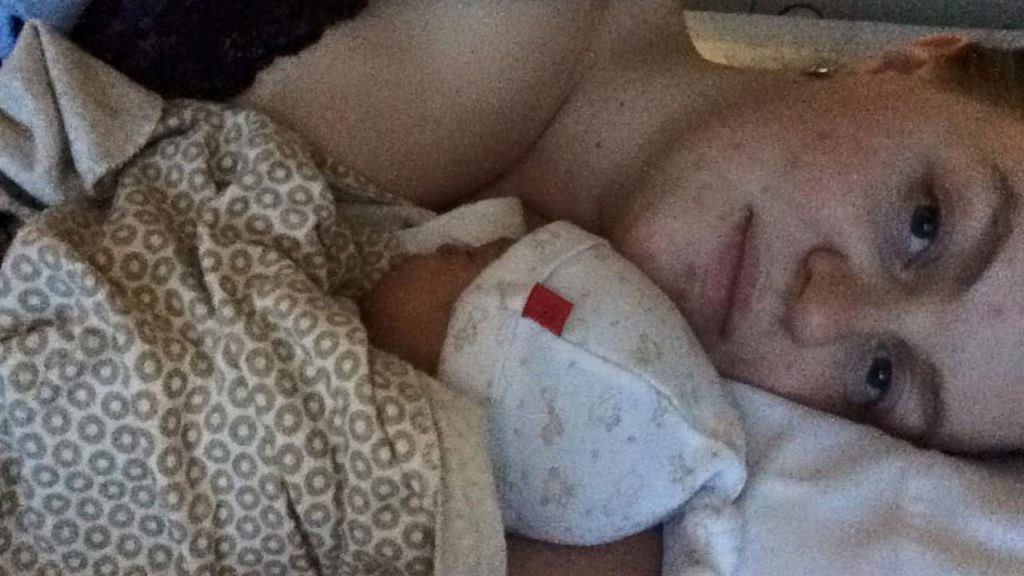
“Intuitively, it didn’t make sense to me to separate babies from their mothers,” Abrahams says. Splitting up moms and babies seemed to create a self-fulfilling prophesy that propelled newborns into severe withdrawal; taking babies away also sent an early message to mothers that they weren’t fit to care for their newborns. When Abrahams began experimenting with allowing babies to stay with their moms, though, he saw immediate results.
After seeing this in action in Vancouver, Newman returned to Kingston in 2013 with plans to launch the same approach there, too. Belleville, located an hour’s drive west, followed suit in 2015.
At Belleville General Hospital (BGH), there’s nothing obvious that distinguishes the rooming-in suites from the others in the maternity ward. From the corridor, the rooms, which each have a crib, hospital bed and bathroom, look like any other. What goes on inside, though, makes them unique.
“We teach the mothers to keep the stimulation down. Swaddling helps. So does having the baby close to you—skin-to-skin is best,” says Nicole Callaghan, a registered nurse in the paediatric ward and special-care nursery. “Soothers help. So does rocking with gentle motions. But no jiggling— that irritates their central nervous system.” Among the nurses, there is camaraderie and a sense of pride in what they’ve achieved through their willingness to part ways with a stale approach.
“Skin-to-skin contact is kind of like magic. At first we could just not believe that it would fix a baby,” says Callaghan. “It’s amazing to see the difference in how well babies do. As healthcare workers, we are taught to believe in the ways we’ve always done things.” With this change in approach, she says, the results have been “eye-opening.”
When BGH staff recall how they handled NAS cases in the old system, they shift in their seats. Sure, it was by the book. But there was no room for empathy, no consideration of the intangible, bond-forming elements that can soften those postnatal days. “There wasn’t a place for moms to stay beside their babies in the nursery,” says Darlene Stuckless, a BGH maternal and paediatric program social worker. “They want to do whatever they can to relieve NAS symptoms. It was such a stress for the moms. And we find the more stressed the moms are, the more symptoms we see in the babies.”
The new approach made all the difference for Jennifer. Before she learned about Belleville’s program, she was panicked about how her hospital stay would unfold. “Being separated from my son would have been absolutely devastating,” she says. And at BGH, the entire staff was respectful, she says, and seemed to understand what she was going through.
As Stuckless says, “Part of our job here is to take care of the moms. We want to make sure that they’re going to feel cared for when they come in and that they’re not going to be judged.”
The week Nicole spent rooming in with Everley gave her greater confidence in her ability to parent (she was especially grateful to have nurses on call for all those early-days questions). “If I hadn’t had that time with her, I never would have gotten the experience I did or learned as quickly as I did. You get that bond,” Nicole says. “When you’re in the NICU, you can’t just pick the baby up and hold her whenever you please. I’m still learning as I go. But I know my daughter because of that time I had with her in those early days.”
A central aim of the program is to make the transition to motherhood easier on moms, given that they’re already burdened with managing their own addictions. Belleville, like Kingston General Hospital, has paired with a community organization that provides counselling and other social supports, from money for hospital parking to food vouchers for mothers to use in the cafeteria.
The hope is that by ensuring babies and their mothers get off to a good start, both will continue on a positive path. For mothers, that means pressing on with their addiction recovery and being able—and willing—to keep custody of their babies with little or no need for social services intervention.
MORE: Canadian universities training staff to deal with opioid overdoses
New guidelines released by Ontario’s PCMCH emphasize more community involvement in mother-focused care, through all stages of pregnancy and the postnatal period. The aim is to reduce the stigma opioid-dependent mothers experience when they are in the hospital, as well as equip them with the skills and confidence to care for themselves and their babies. “They all have a lot of guilt with regards to how they got an opioid-use disorder,” says Alice Ordean, a family medicine practitioner in Toronto and a co-author of the PCMCH guidelines. “If you are di abetic and you need insulin, nobody will question you. It should be the same with opioids. This is a medical condition, not a judgment about being a bad mother. You don’t need to feel bad about it.”
Addiction, and specifically addiction to opioids and opiates, is a complex illness that is not easily cured. Many people who suffer from it have experienced a past trauma—abuse or unexpected death of a parent or friend— as well as a physical injury. “Opioids relieve physical and emotional pain. That’s the reason so many people get addicted,” says Dolores Turner, a case manager with the Belleville and Quinte West Community Health Centre. Many of those who transition to methadone or Suboxone rely on it for the long term, as the risk of relapsing can seem unmanageable.
Nicole is one of them. Another mother has had three babies while on methadone, each of them at Belleville’s hospital. While the program doesn’t aim to cure mothers’ addictions or the underlying issues, it is a powerful step in the right direction. Whether mothers are entering parenthood or beginning a fresh chapter of parenting, starting with confidence and the respect of others is essential to setting many on a good course.
Nicole, who has a new job as a hospital dietary aide, has kicked her dependence on painkillers. She still takes a small daily dose of an opioid treatment medication and likely will for the foreseeable future. Looking back on the past five years is also a powerful guard against caving in to her addiction. “Knowing how much I have to lose now keeps me clean,” she says. Nicole is in her element mothering Everley, who is thriving as a healthy, busy toddler who never had symptoms of withdrawal or suffered any effects from the opioid exposure. Walking at 10 months and running everywhere by 18 months, Everley has met all her milestones and keeps her parents on their toes.
Jennifer weaned herself off methadone. Soon after, she found out she was pregnant again. Her second baby, another boy, was delivered in Belleville, although not in the NAS program. Jane’s daughter, Sophie, is doing well, too, hitting all her milestones with no sign of any problems. “For a year I was worried about what I did to her,” she says. “But she is perfect.”
To date, there is no conclusive data to show any complications or developmental delays due to opioid exposure in the womb. The one thing we know for sure, however, is that what happens on the outside in those critical early days really counts.
*Some names have been changed